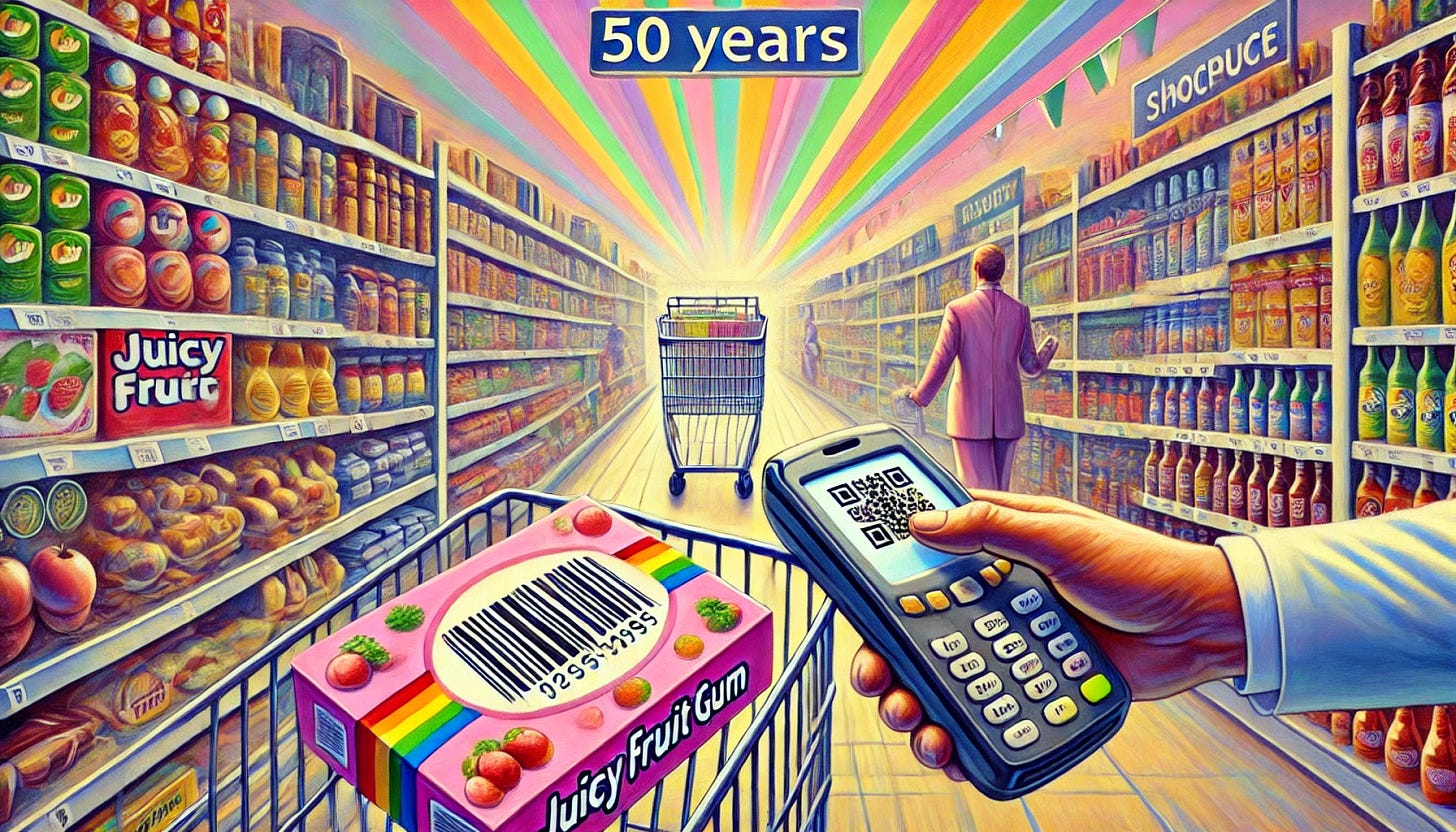Celebrating 50 Years of the Barcode: A Symbol of Commercial Revolution
The Birth of the Barcode
This week marks a momentous occasion: the 50th anniversary of the barcode's introduction to the commercial world. On June 26, 1974, in a supermarket in Ohio, a pack of Juicy Fruit gum made history as the first item ever to be scanned via barcode. This seemingly simple act revolutionised commerce, introducing a system that has become indispensable in retail and logistics.
The Genesis of the Barcode
The barcode's journey, however, began in 1949 when Norman Joseph Woodland and Bernard Silver conceived the idea. Inspired by Morse code, their initial design featured a bullseye pattern. In 1952, they received a patent for their "Classifying Apparatus and Method." Despite its innovation, the design did not gain immediate traction.
The first practical application of a linear barcode emerged in the 1960s with the KarTrak Automatic Car Identification system used for tracking rail cars. However, it was the adoption of the Universal Product Code (UPC) in the 1970s that marked the barcode's commercial breakthrough. The UPC barcode, designed by George Laurer at IBM, was chosen for its reliability and ease of printing over the original bullseye design.
A Revolution in Retail
The first UPC barcode scan in 1974 marked the beginning of a new era. Barcodes rapidly transformed inventory management and checkout processes, enabling stores to carry thousands of products and streamline their operations. By the 1980s, barcodes were ubiquitous in the grocery and retail industries, a testament to their efficiency and reliability.
Barcodes allowed for precise tracking of inventory, reduced human error, and sped up the checkout process, significantly enhancing the customer experience. This innovation also provided valuable data for businesses, helping them optimise stock levels and reduce wastage.
The Evolution of QR Codes
In recent years, QR codes have emerged as a popular successor to traditional barcodes. QR codes, a type of 2D barcode, offer several advantages:
Higher Data Capacity: QR codes can store up to 2,500 characters, significantly more than traditional barcodes.
Ease of Scanning: They can be scanned from any orientation using smartphone cameras.
Customisability: QR codes can be customised with colours, logos, and shapes to match branding.
Digital Integration: They provide a convenient way to link physical and digital content.
Contactless Interactions: QR codes became especially important during the COVID-19 pandemic for enabling contactless interactions.
However, QR codes also have their disadvantages:
Dependence on Technology: Scanning QR codes requires a smartphone and an internet connection.
User Familiarity: Not everyone is familiar with how to use QR codes, and some may distrust the links they lead to.
One-Way Communication: QR codes primarily enable one-way communication from businesses to consumers.
Security Concerns: QR codes can be manipulated for malicious purposes if created through untrusted tools.
The Future of Barcodes and QR Codes
The use of QR codes accelerated significantly during the pandemic, with an estimated 1 billion smartphones expected to access QR codes by the end of 2022. Their applications continue to expand, facilitating contactless operations, creating interactive "phygital" experiences, and integrating with data analytics technologies.
Despite the rise of QR codes, traditional barcodes are unlikely to disappear. They remain reliable for many inventory tracking applications and continue to be a mainstay in various industries. The future will likely see barcodes and QR codes evolving and coexisting, enhancing automatic identification and data capture processes.
Emerging Technologies
Looking ahead, both barcodes and QR codes may face competition from emerging technologies like Radio Frequency Identification (RFID) and object-recognition AI. RFID chips, already used by companies like Uniqlo, enable scanless checkout by embedding sensors in products. Amazon is developing AI technologies capable of identifying products without the need for tags, potentially rendering traditional barcodes and QR codes obsolete.
Summing Up
As we celebrate 50 years since the first barcode scan, we honour a technology that has profoundly shaped modern commerce. The barcode's enduring legacy is a testament to its revolutionary impact on business operations, inventory management, and retail efficiency. While new technologies emerge, the barcode remains a symbol of innovation, simplicity, and efficiency, continuing to drive progress in the commercial world.
If you believe this article would interest someone you know, please feel free to share it anonymously (for us), using any platform that you prefer.





